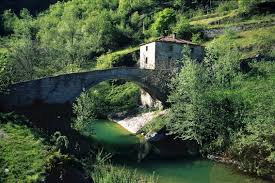Ana Pejdo was born in Zadar in 1977 where she finished primary school and high school. In 1996 she enrolled on the Department of Geography and English language and literature on the Faculty of Philosophy in Zadar, University of Split. In 2002, she enrolled on a postgraduate study of the Geographic basis of littoralisation in Croatia, University of Zadar, to obtain an academic degree of doctor of natural sciences in the field of geosciences, branch of geography. She defended her doctoral thesis “Development of the Zadar County Transport System in the context of littoralisation in Croatia” in 2012 at the University of Zadar under the mentorship of PhD professor Damir Magaš. In 2013, she was elected to the teaching position as assistant professor on the Department of Geography at University of Zadar. From the academic year 2005/2006 she took part in teaching the following courses: Economics – agricultural geography (exercises), Traffic geography, Regional geography – Australia and Oceania, Regional geography of Russia and English in geography (I and II). From the academic year 2017/2018 she teaches classes in extracurricular activities in geography classes. She has published a total of 18 scientific papers and participated in 22 national and international conferences. She is a member of 2 editorial boards for two journals, Geoadria (from 2015) and Geography notebooks (from 2018), (publisher: University of Milano).
Ante Blaće was born in Šibenik where he finished primary school and high school. He graduated with double major in Geography and History on the University of Zadar. He received his PhD in 2015 on the Department of Geography, Faculty of Science at the University of Zagreb on thesis about landscape development in Ravni kotari area. Since 2016 he has been assistant professor on the Department of Geography at University of Zadar. His narrow field of expertize are changes in land and landscape use in the coastal region of Croatia using archival and quantitative methods. He participated in 22 international and national scientific conferences and 11 expert conferences, workshops and seminars for geography lecturers. He is currently teaching following courses: Introduction to the geography, Quantitative methods in geography II, Geographic landscape analysis and Graduate seminar. He cooperated in 4 scientific and expert projects. He was MOZVAG coordinator for the Department of Geography from 2015 to 2019. From 2015 he is technical editor of the Geoadria journal. He has also completed several courses on the use of GIS technology and programs for quantitative analysis.
Ana Pejdo and Ante Blaće from the Department of Geography, University of Zadar, work on MADE IN-LAND project. The aim of the project is protection and valorization of natural and cultural potential of inland areas of the partner regions. They work together on this project because of the scientific interest of professor Ante Blaće which, among other, focuses on changes in the land use in the Ravni kotari area. Professor Ana Pejdo deals with transformation of space influenced by tourism activities. She also participated on the CHESTNUT (CompreHensive Elaboration of Strategic plans for sustainable Urban Transport) as external associate.
The CHESTNUT project, funded by the Interreg DUNAV Transnational Cooperation Programs 2014-2020, was implemented by the Zadar County Development Agency ZADRA NOVA in cooperation with international project partners. Mobility experts from ZADRA NOVA developed the Sustainable Urban Mobility Plan (SUMP), an innovative way of planning urban transport that meets the needs of people in a sustainable way. The experiences that professor Ana Pejdo gained working on this project is now applying to the MADE IN-LAND project. Total value is of the project is 2,814,830 euros, of which EU co-financing amount is 2,392,605.5 euros, or 85 %. The project began on January 1st, 2019, and will end on June 30th, 2021.
Who are the partners on the MADE IN-LAND project and who is part of the Croatian team?
Project has 9 partners from Italy and Croatia. Lead Partner is Marche Region, Italy. Croatian partners include AZZRI (Agency for rural development of Istria), University of Zadar and ZADRA NOVA (Zadar County Development Agency). Italian partners are University of Camerino, Municipality of San Leo, Municipality of Riccia, Molise verso il 2000 (Molise Region Development Agency) and Ente parchi e biodiversità Romagna (the park and biodiversity management agency of the region of Emilia Romagna).
Why is the project called MADE IN-LAND, Management and DEvelopment of INLANDs, sustainable rural management and who is its conceptual author?
MADE IN-LAND project got its name because it emphasizes the development of coastal areas, that is the evaluation of natural and cultural heritage that can be offered to tourists in the form of a tourist product.
MADE IN-LAND project is part of a cross-border program INTERREG V-A Italy – Croatia 2014. – 2020. Have you already started working with colleagues from Italy?
Initial project meeting was held this May in Ancona, center of the region Marche, which gathered all partners from Italy and Croatia. Host of the meeting was region Marche who is also lead partner on the project. Next meeting is scheduled to take place in municipality of Riccia, Molise, in late November. All project partners, in the cooperation with Italian colleagues have already prepared some of the documents.
Project’s goal is to establish synergy between coastal and inland areas. Do they represent two connected parts of the territory?
Aim of the project is to promote and improve the accessibility of cultural, tangible and intangible and natural heritage of the coastal areas to tourists who are primarily visiting the coast and to develop innovative models for managing the sensitive coastal landscape. Project activities will involve developing of the territorial brand and touristic route in the cooperation with local communities of the coastal and inland areas through marketing plans and IT tools.
How is that going to be accomplished if we take in the account that Croatian inland is abandoned and neglected, but has a lot of potential? Is there really a critical mass of people in Croatian inland in the demographic, professional and occupational sense?
Well, that depends on which part of inland we’re referring to. Demographic and economic situation is not the same in the Primorska Hrvatska within the region of Ravni kotari, on one side, and inland Istria, Bukovica or some parts of Dalmatinska zagora on the other side. Croatia is a small country and if some opportunities are made in the form of new jobs, which is not easy to accomplish, people who live in Zadar can get the opportunity to work, for example, in Benkovac. This project will not reverse negative trends, but It will help to improve the current situation.
Does this project actually trying to relieve the coast, especially in the summer time, and what kind of tourist offer is going to be developed for the inland areas?
Yes, of course. Project implementation aims to promote and improve accessibility of natural and cultural heritage of the inland areas to tourists visiting the coastline and to develop innovative models which will help developing different types of tourism like cultural tourism, rural tourism..
Are the solutions focused on the cultural and ecological contents? Please, explain.
Ecological products are not primarily in the focus of the project. Each local agricultural product that can be offered to tourists, especially if its origins are ecological, contributes to quality of the touristic offer. Tangible and intangible cultural heritage is in the focus of the project.
What are general assumptions for rural areas to be actualized in touristic and cultural aspect in order to be self-sustainable?
Tourism is impossible to develop without the synergy with other economic activities. Tourism in rural areas can already be sustainable. The only question is how many tourists we actually desire? Inland areas lack of accommodation units, but this trend is changing in the last few years. Inland areas of Zadar and Istria county have noticeable rise in number of beds, especially in higher accommodation categories, for example luxurious houses.
What solutions in your project assignment you can offer on the given topic?
Project activities will involve developing of the territorial brand through the cooperation with local communities of the inland areas (counties, tourist boards, family farms). Cultural and natural heritage will be presented with joint marketing plans and IT tools. Zadar Developing Agency ZADRA NOVA will design the brand and the tourist route. Scientific team at the University of Zadar is developing a cross-border strategy along with University of Camerino in Italy. Cross-border strategy should be one of the indicators on how to develop tourist activities in the inland areas.
Is organic food and beverage production a solid base to unload pressure of the coast during summer season? What else is necessary to do, given the fact that are not enough family farms in the inland areas, even less the ones that can accommodate tourists and offer them quality service in the short term, for example wine and delicacies tasting?
Yes, that is a solid base and there are certain number of family farms in the Ravni kotari area which deal with organic food production. Designing the route which will, for example, include visiting fortresses of the Ravni kotari and Bukovica area along with food and wine tasting at the local family farms can help improve the situation. So, it is very important to introduce the project to as many as possible local stakeholders which can participate, cooperate and improve their offer.
Croatia’s cultural offer, despite the fact that Zadar, for example, has Asseria, ancient Nadin and various other cultural attractions, is poorly represented and advertised. Will you be addressing this issue in your latest project?
First phase of the project is inventorying of the existing natural and cultural heritage. Although, a lot has been done for improving the situation, there a not enough projects that deal with overall offer in the region we live. By analyzing all the elements of the natural and cultural heritage, it is easier to identify their comparative advantages and to highlight unused potential. Cultural route that is in development is a small shift towards 365 days tourism that will attract visitors during the whole year, or at least, in the pre-season and post-season period not just during the few summer months. Asseria and Nadin are localities that should be valued and recognized as a part of this project.
Both of you, each in your own way, dealt with littoralisation in Croatia and transformation and devastation of the rural places and regions in your scientific works. How can Croatia reverse this trend?
Answering this question would require a separate interview. Mentioned topic is not just a problem in Croatia, but also in other more economically developed countries. That trend is unlikely not going to slow down because too many factors in decades have affected on the decline of the inlands. The ineffective judiciary and administration, irregularities and burdening the private sector with many imposts are the most prominent problems. It’s difficult to talk about significant development without solving or alleviating these obstacles.


